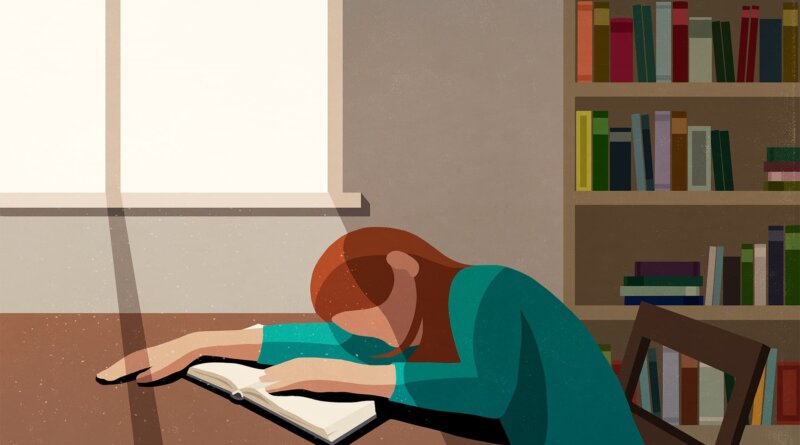College Students Found Help in Personal Pandemic Stories
Nov. 28, 2022 – The COVID-19 pandemic was hard on everyone, especially during the early months of the lockdown. But college students had particularly high stress levels, with mental health effects that have remained in some people even 2 years later.
During spring semester of 2020, many college students had to go home and live with their families – “which was a big adjustment after being more autonomous – deal with remote instruction, figure out plans such as summer internships, worry about their health and the health of others,” all at a critical time when teens and young adults are “gaining independence, developing a central identity, and figuring out where they fit into the world,” says Jordan Booker, PhD, an assistant professor of psychological sciences at the University of Missouri.
Olivia McKenzie is an example. Now 23 and working as a paralegal in New York City, she was a sophomore at the University of Michigan when the pandemic struck.
“We were sent home because of COVID, and I did my classes and coursework online,” she says. “College was awesome for me because I like being around friends and in the company of many people, so being at home and away from my friends wasn’t good for me or for my mental health.”
McKenzie feels “lucky” because her parents recognized her needs and supported her return to Ann Arbor, where she shared a living space with a few other students and continued online classes from there.
Booker and his colleagues wanted to understand how college students were coming to terms with shutdowns and quarantines.
He was part of a team effort, including researchers from private and public universities around the U.S. with expertise in studying how people use life stories to organize and make sense of their lives. The team came together very quickly as colleges were shutting down during spring semester, Booker says. “We wanted to see the implications of the shutdown and how these students were making sense of how COVID was impacting their lives early on.”
Different Styles for Different Folks
Over 600 first-year college students were asked to write about the impact of the pandemic on them in response to a computerized questionnaire with narrative prompts.
The researchers expected the crisis to be short. But as the pandemic continued, it became clear that, unlike shorter events (like natural disasters), the pandemic never had a “clean break,” signaling its end. So the researchers followed these students for a year to see if they could detect themes in their narratives that might predict their adjustment to the issues posed by COVID-19 and the return to campus.
The students also filled out questionnaires about their psychological adjustment, sense of belonging, well-being, identity development, and mental health concerns.
“There are different ways that folks come to terms with their experiences and talk about the impact on their lives,” Booker observes. “Storytelling, in and of itself, is a widespread human activity. We use it all the time to share insights and make sense, day-to-day.”
But how people tell their stories differs, based on their personalities, cultural norms, and social standards.
“For example, some people provide more structure, organization, and detail; some people focus on major goals, such as personal success and connecting with others; and some bring in more integration and personal growth,” he says.
Personal Growth
“We found that how the young people tended to emphasize personal success and focus on [independent] values tended to be tied to relatively fewer reports of COVID-related stressors,” Booker reports.
“Another big theme was the expression of personal growth – ways that students were talking about and recognizing challenges from COVID-related experiences that actually changed their lives for the better,” he says.
Students who identified ways that COVID-19 helped their personal growth had fewer reports of COVID-related stresses, better mental health in the moment, and more advanced identity development, he says.
These findings extended to the 1-year follow-up, “where we continued to see valuable insights and ways that growth was tied to most areas of development and adjustment.” The students “were able to incorporate personal reasoning, ways that they could move forward, even with a lot of uncertainty in the world, and we saw initial and lasting positive ties with other areas of development and adjustment.”
McKenzie says the pandemic “forced me to grow because there were all sorts of emotions I wasn’t used to dealing with full-on when I was distracted by being with friends or going to classes.”
She’s learned from the pandemic. “I think there was a lot I took for granted instead of feeling gratitude. Now, it’s way easier for me to look back and be grateful or intentional about how I spend my time, seeing people, or being able to go outdoors, which I couldn’t do during the freezing winter in Michigan.”
Another long-term area of growth has been self-care. “The pandemic caused me to be in tune with myself, perhaps in more ways than I would be at this stage in my life if I hadn’t gone through that.”
She also has learned to value spending time alone and is more “intentional” about whom she spends her time with.
But there were downsides. “Anxiety in particular is a lingering effect – unsureness about general things and being a lot more sensitive to news and world events, because you never know what might happen next,” she says. “I see this not only with me, but with my peers as well. There’s more harsh reality in our lives now, a sense of unease in my generation. Nothing will ever be the same.”
Sharing Stories
McKenzie didn’t directly describe her perceptions of the pandemic in writing during the lockdown, although she was a creative writing student and taking two writing classes. But “how the pandemic was influencing me as a human being got woven into my writing in other ways.”
She kept a journal and talked about common experiences with friends. “I found a job in a restaurant, which felt like my saving grace during the pandemic because it was an excuse to leave the house,” she says. “For over a year, we were fully masked and limited to outdoor seating, but still quite busy. We exchanged a lot of stories in that space.”
Sharing stories of common stressors and coping helped forge a “different kind of friendship” with fellow waitstaff and created a “sense of community and comradery during a time when ordinary ways of communing with others were discouraged.”




